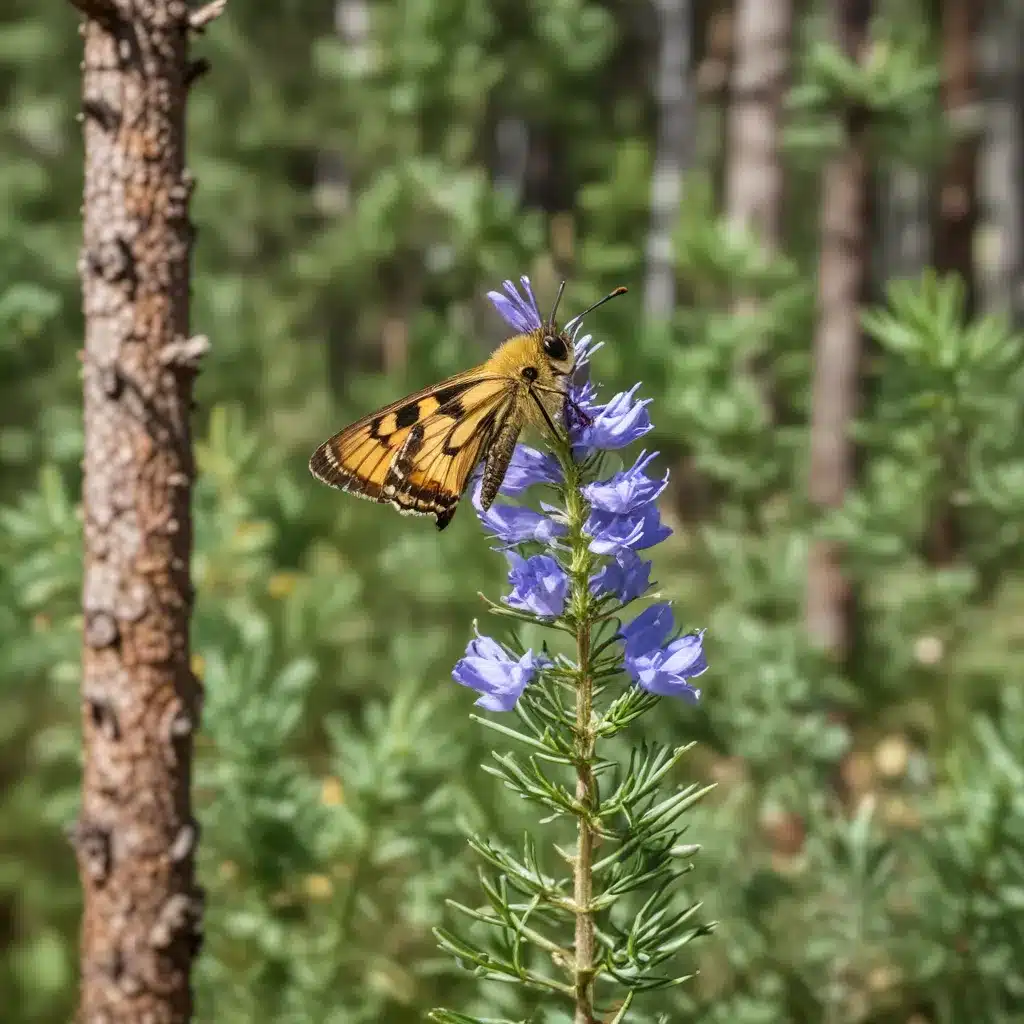
Discovering the Wonders of Pollinators in the Crooked Pines Meadows
Discovering the Wonders of Pollinators in the Crooked Pines Meadows
The Crooked Pines Farm meadows are alive with a dazzling array of wildflowers and buzzing insects that play a vital role in our local ecosystem. As a farm educator, I’m thrilled to share the importance of pollinators and how you can help support them right in your own backyard.
The Importance of Pollinators
Pollinators, such as bees, butterflies, moths, and hummingbirds, are responsible for the reproduction of over 75% of the world’s flowering plants, including many of the fruits and vegetables we grow and enjoy. Pollination occurs when these vital creatures transfer pollen between flowers, enabling the plants to produce seeds and fruit. Without pollinators, our food supply and the health of our natural environments would be severely compromised.
Pollinators also serve as food sources for other wildlife, contributing to the overall biodiversity of an area. Predatory insects like praying mantises and ladybugs feast on aphids and other plant pests, helping to maintain the delicate balance of our farm ecosystem. Migratory birds, like the ruby-throated hummingbird, depend on nectar-rich flowers during their long journeys. Preserving pollinator-friendly habitats is crucial for supporting these intricate food webs.
Pollinator-Friendly Habitat Features
The Crooked Pines meadows are teeming with the type of diverse flora and fauna that pollinators thrive on. Native wildflowers like purple coneflowers, black-eyed Susans, and golden rod provide an abundant source of nectar and pollen throughout the growing season. Clusters of milkweed plants offer essential food and breeding sites for monarch butterflies.
Equally important are the sheltered areas that provide nesting sites for pollinators. Patches of bare ground, hollow stems, and fallen logs offer prime real estate for ground-nesting bees and butterfly larvae. Leaving some leaf litter and dead wood in place helps create these vital habitats.
Freshwater sources, like the small pond at the edge of the meadow, give pollinators a place to drink and bathe. Shallow bird baths or saucers of water with rocks or sticks can supplement natural water sources in your own garden.
Threats to Pollinator Populations
Unfortunately, pollinators face numerous threats, including habitat loss, pesticide use, and climate change. Conversion of natural areas to monoculture crops or developed land eliminates the diverse plant life that pollinators require. Widespread use of neonicotinoid insecticides has been linked to concerning declines in bee populations. As temperatures rise and weather patterns shift, pollinators struggle to adapt and find the resources they need.
Diverse Flora and Fauna
As I wander through the Crooked Pines meadows, I’m continually amazed by the rich tapestry of life. In addition to the vibrant wildflowers, I often spot painted lady butterflies sipping nectar, bumblebees buzzing among the clover, and ruby-throated hummingbirds darting from trumpet vine to bee balm. The dazzling scarlet tanager and melodic field sparrow add their voices to the chorus of nature.
Pollinator Observations
One sunny afternoon, I paused to watch a honeybee methodically working its way around the purple coneflowers, collecting pollen in its hairy legs. I marveled at the bee’s impressive ability to identify the most rewarding blooms, guided by the flowers’ UV-reflective patterns and nectar guides.
A flash of orange caught my eye, and I spotted a monarch butterfly fluttering between milkweed plants. I followed its graceful movements, observing how it delicately probed each flower with its long, proboscis to extract the sweet nectar. The monarch’s distinctive black-and-orange markings serve as a warning to predators that it is unpalatable, thanks to the toxic chemicals it has accumulated from its larval host plant.
Conservation Efforts
Crooked Pines Farm is dedicated to maintaining these pollinator-friendly habitats. We avoid the use of synthetic pesticides and instead rely on integrated pest management strategies that encourage natural predators. Our organic vegetable garden and flower beds are specifically designed to provide a continuous bloom of nectar-rich plants.
We also partner with local conservation organizations to monitor and protect pollinator populations. Citizen science initiatives, like the Xerces Society’s Western Monarch Thanksgiving Count, allow our visitors to contribute valuable data on the status of pollinator species in the region.
Native Plant Selection
When planning your own pollinator garden, choose native wildflowers, trees, and shrubs that are adapted to thrive in your local climate. Native plants often require less maintenance, are more drought-tolerant, and provide the specific nutrients and shelter that our native pollinators have evolved to utilize.
Some excellent pollinator-friendly options for the Crooked Pines region include purple coneflower, black-eyed Susan, bee balm, mountain mint, butterfly bush, and serviceberry. Consult with your local nursery or extension service for personalized recommendations.
Reducing Pesticide Use
Avoid using broad-spectrum insecticides in your garden, as these can harm beneficial insects along with pests. Instead, embrace integrated pest management techniques, such as hand-picking pests, using organic insecticidal soaps, and encouraging predatory insects. This allows pollinators to thrive while still managing problem species.
Providing Nesting Sites
In addition to flowering plants, pollinators need suitable nesting sites. Leave bare ground in sunny areas for ground-nesting bees, and provide hollow stems, dead wood, and natural leaf litter for cavity-nesting species. You can even construct bee hotels or butterfly houses to offer additional housing.
Citizen Science Opportunities
The Crooked Pines Farm regularly participates in pollinator monitoring initiatives, and we encourage our visitors to get involved. Programs like the Xerces Society’s Bumble Bee Watch and the National Audubon Society’s Hummingbird Project allow citizen scientists to submit observations and contribute to our understanding of pollinator populations.
By working together, we can all play a role in supporting the incredible diversity of pollinators that call the Crooked Pines meadows home. I hope you’ll join us in discovering the wonders of these fascinating creatures and taking action to protect them.


